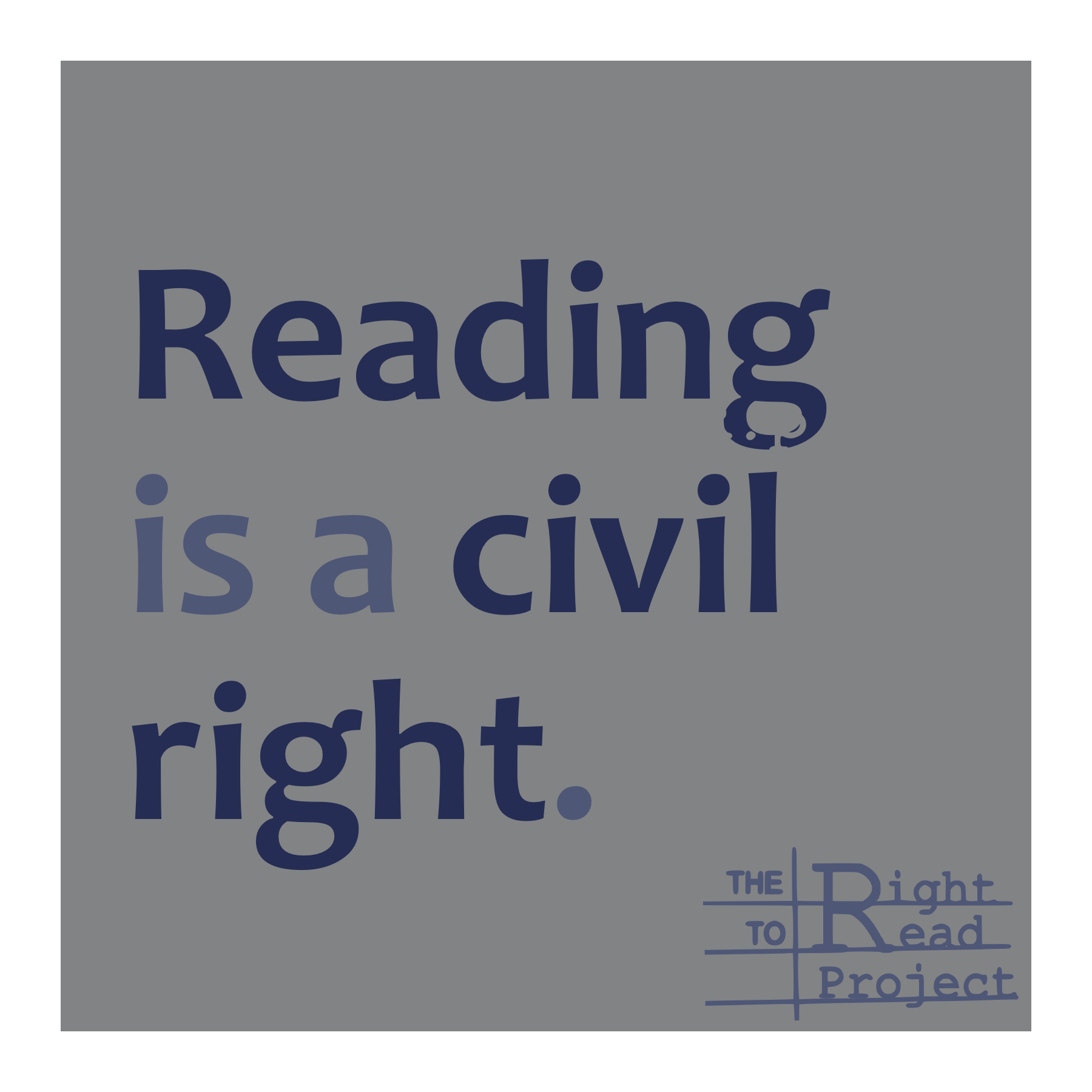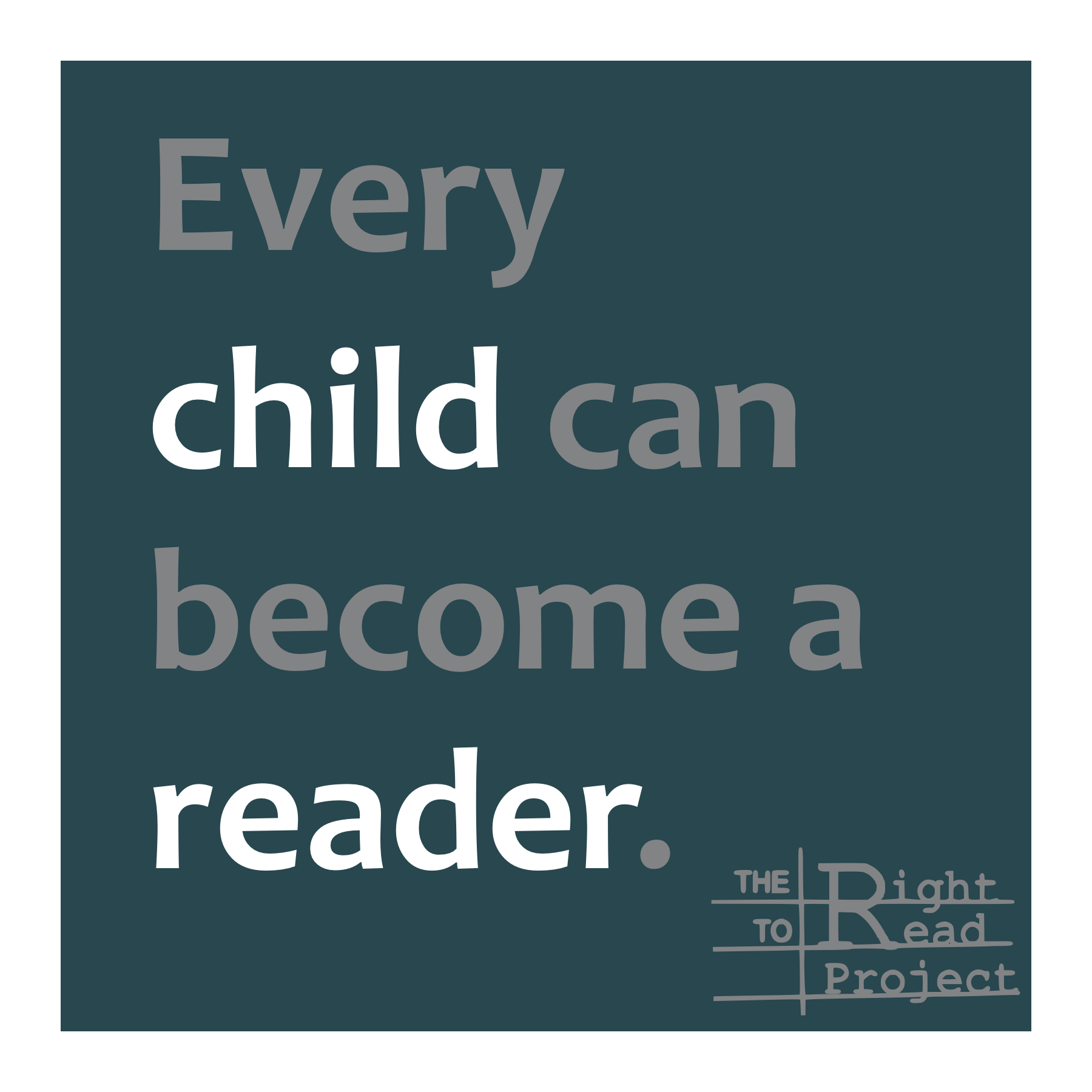This facilitator’s guide is intended to provide possible points for pause and discussion as educators, advocacy groups, and community members listen to At a Loss for Words from APM Reports.
You’ll find that some of the questions have related resources to enhance your discussion. You will also find additional reading, images, and a video embedded in the APM article. We would love to hear about your experiences discussing the podcast and any of the related resources we have included.
Materials:
At a Loss for Words
- Podcast
- Transcript of the Podcast
- Extended article (includes additional information and annotations with links to further reading)
Additional Resources for Discussion
- Image: Ladder of Reading
- Image: Scarborough’s Reading Rope
- Short article: Why do some children learn to read without explicit teaching?
- 2 minute video interview with Dr. Mark Seidenberg How do we help teachers succeed in teaching reading?
- 1:30 video with Dr. Mark Seidenberg How does a teacher’s expertise contribute to helping kids read?
| Introduction (0:00 – 1:00) | |
| Stop after introduction. What did you hear that piqued your interest? | |
| Molly’s Story (1:00 – 5:35) | |
| Stop after “…the curriculum told her to.” (5:35) and discuss: Molly came up with her own way to read. What were her strategies? (Make note of these for later discussion) | |
| The State of Reading Education in America (5:35 – 7:15) | |
| A Brief History of Reading Theory and Instruction (7:15 – 14:38) | |
| Stop after “… doesn’t quite work the way they thought” (14:38) and discuss: How was Goodman’s theory different from the theories that had come before? What implications did that have for instruction? Why might Clay’s approach and Goodmans’ theory be so appealing? | |
| The Scientific Study of Reading (14:38 – 25:52) | |
| Stop after “… strategies to solve all those tricky words” (25:52) and discuss: How do the findings of DJ’s brain imaging experiment connect to the Ladder of Reading? How does the research provide insight into Molly’s experience as a struggling reader? | Ladder of Reading |
| The Three-Cueing System Entrenched (25:52 – 33:09) | |
| Stop after “… strategies to solve all those tricky words” (33:09) and discuss: What makes the picture power lesson and lessons like it so appealing to teachers? | |
| Margaret’s Story (33:09 – 43:12) | |
| Stop after “… the way that poor readers read” (43:12) and discuss: Margaret worries about the long-lasting impact of teaching cueing. How is this worry reinforced by the other storylines? [You might discuss: Molly and the tutoring center both she and her daughter have attended. Erica, the SAT tutor. The statistics shared earlier in the podcast: 1/3 of the nation’s 3rd graders not reading at a basic level and the high school dropout rates.] How does the instruction in Andrea’s classroom reflect Scarbough’s Reading Rope? | Scarborough’s Reading Rope |
| Cueing Persists (43:12 – 46:52) | |
| Stop after “… a system that is broken” (46:52) and discuss: There is no federal organization (such as the FDA) to oversee the quality of curriculum on the market. Given that any reading program can be sold, how might you want districts, schools, and teachers to proceed when selecting curricula? | |
| What the Proponents Have to Say (or Not) (46:52 – 50:28) | |
| Stop after ”… unaware of this evidence (50:28) and discuss: Though scientists in labs have collected evidence to the contrary, the Goodmans remain committed to the beliefs Ken Goodman presented in 1967. What can we learn from them about how we might like to pursue and respond to new information? | |
| Molly and Claire Revisited (The Guessing Monster) (50:28 – 51:38) | |
| Stop after ”I slayed the guessing monster.” (51:38) [Watch a short video https://bit.ly/2YZO97t from Dr. Mark Seidenberg about the divide between reading researchers and teachers and another on the invaluable expertise of teachers https://bit.ly/2L7OrEr] What steps might be taken to unite the worlds of reading research and teaching? Why might these steps be beneficial to students and to our society as a whole? To learn more about why cueing instruction sometimes seems to work, consider reading and discussing a short article about why some students appear to read “naturally.” Given what you’ve heard, in what ways has your thinking remained the same? In what ways has it changed? | 2 minute video interview with Dr. Mark Seidenberg How do we help teachers succeed in teaching reading? 1:30 video with Dr. Mark Seidenberg How does a teacher’s expertise contribute to helping kids read? Why do some children learn to read without explicit teaching? |









Extremely helpful resource. Thank you! My only suggestion would be to add links to Emily Hanford’s 2 previous podcasts addressing this issue as they are excellent as well.
Great suggestion! Links to additional podcasts are below:
Hard to Read (Link to Hard Words)
“There are proven ways to help people with dyslexia learn to read, and a federal law that’s supposed to ensure schools provide kids with help. But across the country, public schools are denying children proper treatment and often failing to identify them with dyslexia in the first place.”
Hard Words (Link to Hard Words)
“Scientific research has shown how children learn to read and how they should be taught. But many educators don’t know the science and, in some cases, actively resist it. As a result, millions of kids are being set up to fail.”
You said it very well.!
side effects for modafinil
Provigil Before Workout
This is very helpful